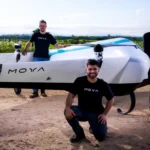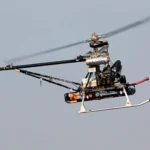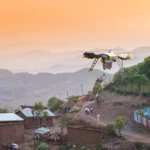In the past, the typical platform used in short-range UAV missions was a small, fixed-wing vehicle capable of taking off easily with a hand launch or a short runway. The demands for greater autonomy and payload have led to a certain size “inflation” that has led to the need for specific equipment to put it into flight.
Types of launchers or launch pads
In the low range of weights, launchers that use an elastomer to generate the impulse are the most common. From a certain range of weights, the usual thing is to use a pneumatic launcher. This differentiation is due to the need to achieve a good balance between disadvantages and advantages that we develop below:
Elastic catapult for UAVs
Pros: They are relatively simple and affordable and the replacement of the elastomer is not expensive.
Cons: Elastomers are polymers that are affected by sun exposure and duty cycles, which can lead to breakage and damage to equipment. Elastomers lose properties – in terms of the energy they accumulate – with the passing of the throws. In addition, its useful life is limited. The elastic restitution in these materials suffers from a lack of progressivity, and implies generating strong acceleration peaks – punishing the structure of the vehicle and that of the launcher – to achieve high exit speeds. Another of its characteristics is that they do not adapt easily to changes in the mass or the exit speed of the vehicle.
Pneumatic catapult for UAVs
Pros: They are programmable, in the sense that different launch speeds can be obtained depending on the pressure loaded in a reboiler. They can easily be adapted to launch vehicles with different characteristics. In addition, the acceleration of the vehicle is progressive and they offer stable performance independent of the number of launches. They can be sized to launch large loads.
Cons: They tend to be larger and heavier equipment, and require more training from their operators. They have a more elaborate manufacture, being somewhat more expensive.

At Embention, we develop components for all types of autonomous vehicles. In our line of catapults for UAVs, you can find:
- C200R, a compact elastomeric UAV catapult to meet the needs of smaller vehicles (up to 6 kg and 14 m / s).
- C400P, a pneumatic launcher for the most sophisticated, medium-sized UAVs (up to 30 kg and 24 m / s).
- C800P, an evolution of the previous with a larger take-off car size and boiler capacity, which allows it to launch larger drones (up to 38 kg and 20 m / s).
This way we attend to the needs of the majority of operators with small and medium range equipment.




